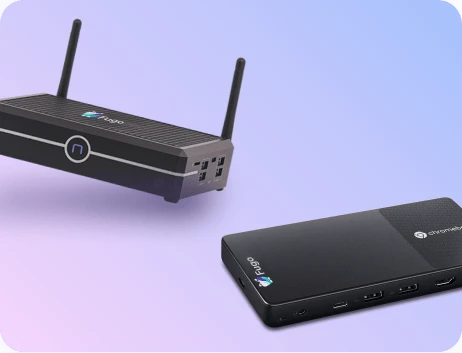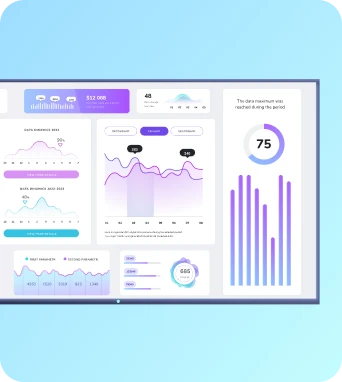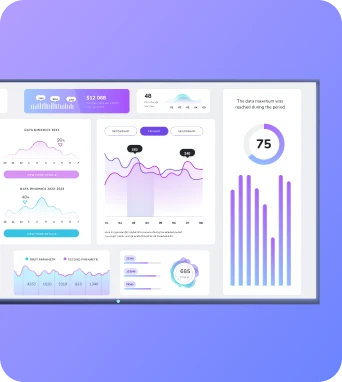Brightness (nits)
Brightness, expressed in nits, is the measure of a display's luminous intensity per square metre. For digital signage and TV dashboards, nits indicate how well content will remain visible under different ambient lighting conditions, whether mounted indoors near windows or in direct outdoor sunlight.
Brightness (nits)
Why nits matter for digital signage
Brightness determines whether a display remains legible against ambient light. In environments with heavy daylight through windows, reflections and glare can wash out content on low-nit screens. A display rated for 250–400 nits may suffice for interior corridor signage or back-office dashboards, but front-facing retail windows and outdoor installations typically require 1,000 nits or more to combat direct sunlight. Beyond sheer luminance, the interplay with screen coatings and anti-glare treatments changes perceived clarity; a matt finish can reduce reflections but may also slightly lower perceived contrast, which higher nits can offset. For workplace dashboards, readability at a glance is paramount. Metrics, alerts and KPIs displayed in small type benefit from higher brightness to maintain contrast against the background, especially in mixed lighting where staff move between bright and shaded zones. Higher nits can improve effective viewing distance, allowing content to remain readable from further away without enlarging fonts or redesigning layouts. However, brighter screens also draw more power and produce more heat; operators should balance visibility gains against energy budgets and thermal management, particularly for large-format installations running 24/7. Many modern commercial displays include ambient light sensors and adaptive brightness features, which help maintain visibility while conserving energy and extending panel life. When planning a deployment, test candidate screens in situ where possible and measure real-world performance rather than relying on spec sheets alone.
How to choose the right nit rating
Selecting the optimal nit rating begins with a clear assessment of installation conditions. Start by identifying the maximum ambient light levels at the site during operational hours, noting times when direct sun hits the display. For indoor locations without direct sunlight, 250–700 nits often provide comfortable visibility; conference rooms, lobbies and break areas commonly fall in this range. For environments with substantial daylight exposure or semi-outdoor placements like covered walkways, consider 700–1,000 nits. Fully outdoor signage exposed to direct sun typically requires 1,000–5,000 nits depending on reflector characteristics and desired viewing angles. Next, consider content type and viewing distance. Text-heavy dashboards and detailed charts demand higher brightness relative to simple image or video displays because clarity and contrast for small elements matter more. If screens are mounted high or meant to be read from a distance, increase the nit specification to preserve legibility. Energy consumption and heat output must also factor into procurement decisions: higher-nit panels consume more power and may necessitate better ventilation or more robust mounting. For digital signage networks managed via Fugo.ai, take advantage of software features such as scheduling, brightness profiles and content optimisation to mitigate power use—dimming during off-peak hours, using darker templates where appropriate, and applying ambient light sensor integrations. Finally, always validate vendor claims with real-world testing when possible; measured brightness under operating conditions, rather than peak spec numbers, will determine day-to-day performance.
Practical considerations and next steps
Keep the learning going...
BrightAuthor
BrightAuthor is BrightSign’s Windows application for creating, scheduling and publishing presentations to BrightSign media players. It provides a timeline-based editor, support for multimedia, interactivity and live data feeds, and export options for local playback or distribution via a BrightSign Network or third-party CMS like Fugo.
Brightness adjustment tools
Brightness adjustment tools are combined software and hardware controls that regulate display luminance on digital signage. They manage automatic or manual brightness, respond to ambient light, enable scheduling and power-saving modes, and preserve readability and device longevity across TV dashboards and workplace screens.
Brightness uniformity
Brightness uniformity describes the evenness of luminance across a display, measured as the relative difference between the brightest and darkest areas. It is a practical quality metric for TV dashboards and digital signage that influences readability, perceived colour consistency and the integrity of brand assets across a signage network.



